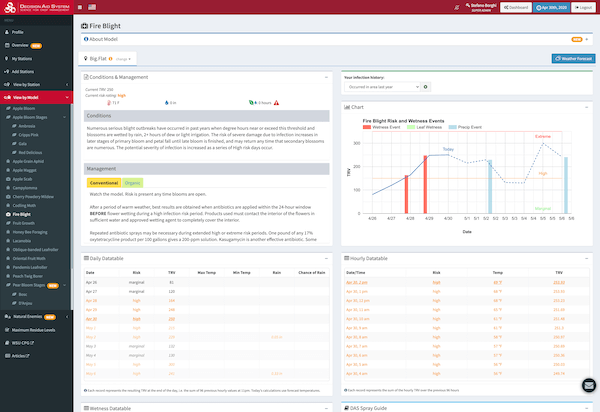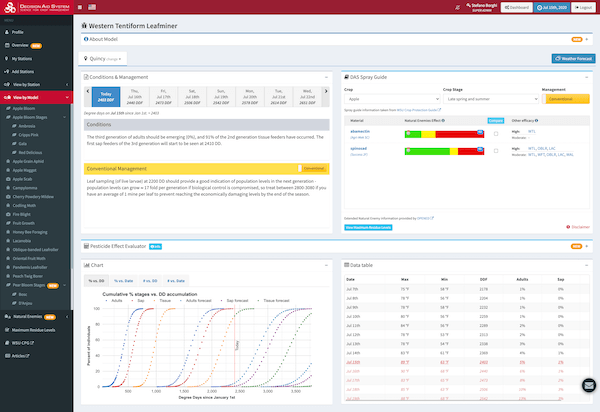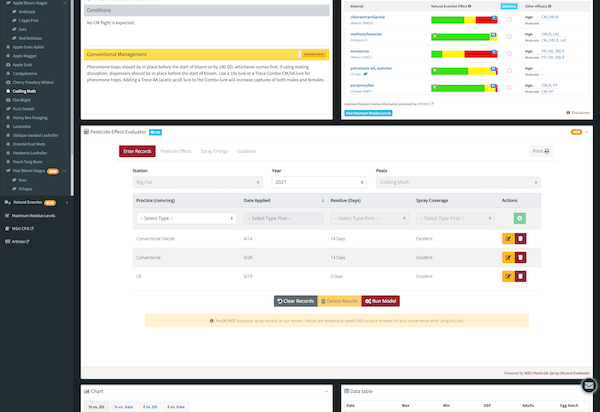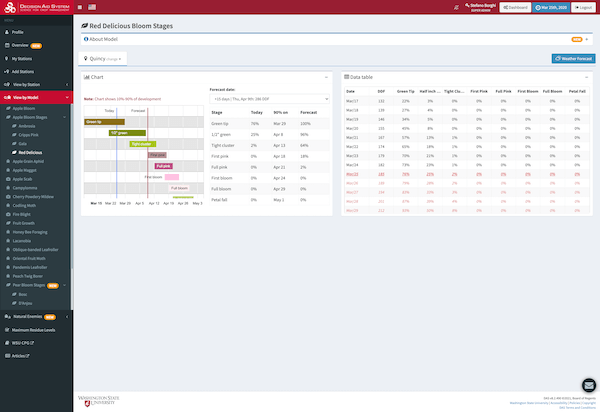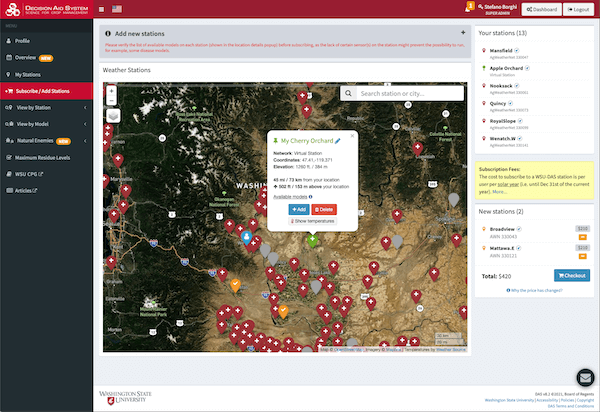
Canker Removal Now is Critical for Fire Blight Management this Year
Monday Aug 25, 2025
No one wants fire blight in their orchard next year. For fire blight to take off in your orchard next year three things need to be there: the pathogen, the warm conditions and...

Storage Scald of Apples
Friday Aug 15, 2025
The appearance of storage scald has been related to orchard temperature during the final weeks of fruit maturation. DAS provides accumulated hours below 50°F as well as orchard management recommendations for this postharvest disorder.

Predicting Third Generation of CM
Friday Aug 01, 2025
Predicting the extent of the third generation of codling moth (CM) is based on a statistical relationship of the degree-days historically found on 1 August and at the end of the season on 1 November. We update this prediction roughly every 10 days after 15 August because the DD prediction for 1 November gets more accurate as we get closer.
What is DAS?
A collaborative project between WSU Extension and WSU Agricultural Research Center.
WSU-DAS is a web-based platform designed to transfer time-sensitive information to decision makers in the tree fruit industry. It runs insect, disease, disorder, and horticultural models to estimate the current status of the issue and links that to appropriate management and pesticide recommendations.
